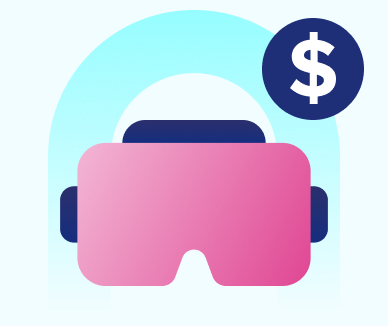
Don't want to miss a thing?
The Promise of the Metaverse
Think about how often you’ve heard discussions about the metaverse over the last year. It personally occupied a large portion of my work during that time — and I know I’m not alone.
The metaverse is slowly becoming the new generation’s digital engagement platform, but it’s making changes across enterprises, too.


While everyone seems to agree that the future is in the metaverse, it’s important to understand how we got to this point.
Virtual worlds are expanding

Virtual worlds are currently experiencing a surge in membership. Often rooted in gaming, these worlds offer immersive and interactive experiences for their users where real-life physical limitations don’t apply.
Opportunities for socialisation, competition, and collaboration abound. Users can connect with those who share similar interests. It provides a platform where individuals, organisations, and commercial companies can form communities. All this leads to the formation of new social, professional, and economic networks, fostering innovation and collective problem-solving.
Communities that sprout from these friendships enable users to collaborate and create content. This creativity gives rise to everything from virtual art, music, and fashion to virtual experiences and events.

Building virtual spaces and creating custom avatars fosters a sense of ownership and belonging. It also gives rise to designing virtual goods, which are sold within these spaces and become part of its virtual economy. But this monetisation means real-world value for their virtual creations, including actual businesses operating in the virtual sphere.
Whether simply playing or participating in virtual economies, these online worlds create a rewarding experience that keeps users engaged and returning for more.
The metaverse’s promise
As the metaverse continues to evolve, it is expected to shape the future of digital experiences, economies, and societies in profound and unprecedented ways. It will upend human interaction and transcend cultural and physical boundaries. With the right guardrails and foundation, it can be a safe and accessible space for people from all walks of life to connect and interact.
The metaverse also offers a new layer for the digital economy to serve these communities. Builders, facilitators, and designers can find opportunities to create and monetise these creations within the metaverse ecosystem.

For some that will mean building virtual worlds, designing virtual assets, or creating content such as virtual experiences, games, and goods. For others, it could include providing services like virtual event planning or commerce facilitation.
All this drives the evolution of economic activity called “metanomics.” Coined by JP Morgan, the term describes the economic opportunities within the metaverse, including using purely digital currency to purchase entirely digital products.
The future is in the metaverse
The metaverse is poised to change industries and enterprises alike. This article is the first in a five-part series that covers the metaverse’s momentum, limitations, and potential impact, especially for financial services. In addition, the series provides a step-by-step guide on how to make your way into the metaverse.
Join us next week and discover where exactly the metaverse began and how the pace of its innovation is only increasing.

